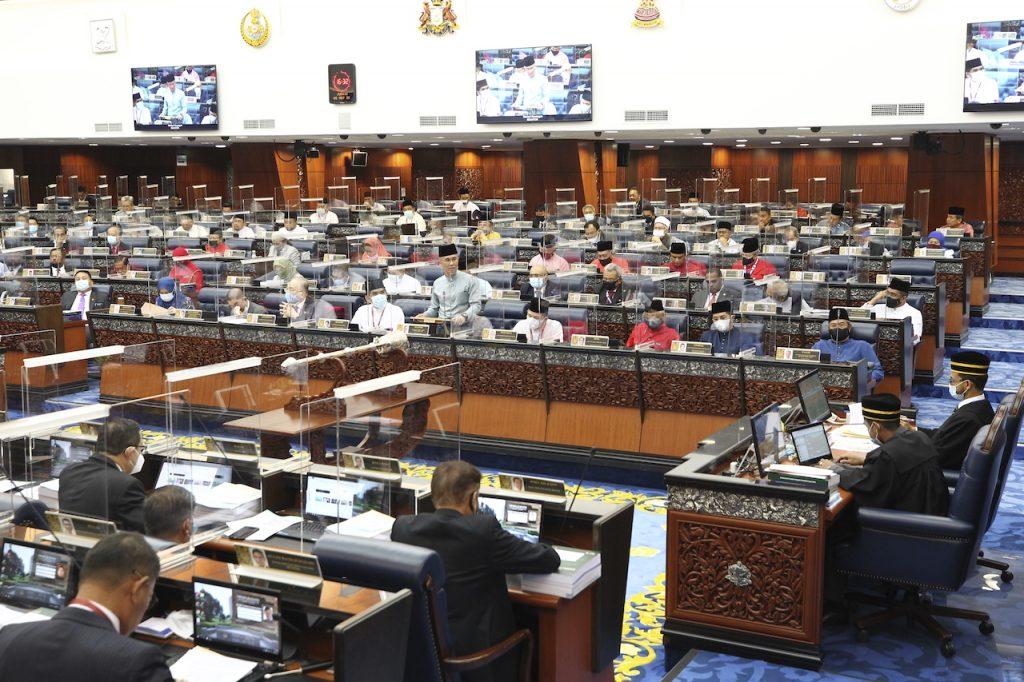The maths of holding a Parliament sitting during a pandemic
With the reopening of the Dewan Rakyat a foregone conclusion, the onus is now on the legislature and the authorities to provide sufficient safeguards, given how enormous the crowd will be.
Just In
The Yang Di-Pertuan Agong and the Council of Rulers have spoken. They want, in unequivocal terms, the Parliament to reconvene and the emergency to end on Aug 1. And by the looks of it, Prime Minister Muhyiddin Yassin has to call for a Dewan Rakyat sitting soon.
Leaving the politics of reconvening the Dewan Rakyat aside, just how safe is it for the Lower House to meet when we are still in Phase 1 of the MCO, with daily new Covid-19 infection still hovering in the 4,000 to 6,000 region?
The Dewan Rakyat has 220 lawmakers (after two passed away). And with the Standing Order remaining unchanged, the first sitting has to be done physically, if only to deliberate and approve the Standing Order that allows for a hybrid meeting.
For a start, there will be 220 MPs in the August House. Presumably, each of the MPs has one staff tagging along. It could be an assistant, researcher or driver. That would bring the total number of people in the building to 440.
And then there are 32 ministers and 38 deputy ministers. As these 70 members of Cabinet may have to answer questions and conduct other legislative affairs, they will probably have two extra staff tagging along (they each have a driver and bodyguard anyway). So, this brings the total number of people in the house now to 580.
After that, there’s the ministerial staff. It would not be inconceivable for each ministry to send five staff there, whether to provide input on bills being debated or answers to parliamentary questions. That adds up to another 160 people.
Parliament also has its own staff. Even if we take a conservative figure due to Covid-19 restrictions, it’d take at least 50 staff to make sure the federal legislature runs somewhat smoothly, from the speaker to the bentara to those who attend to the printing and circulating the reams of documents like Order Paper and Q&A daily. Add that to the ministerial staff earlier, and there’s now 790 people in the house.
And what is a Parliament sitting without the press corp? Assuming only 20 media outlets assign staff to cover the proceedings and each outlet, including international press, sends three representatives, including journalists, cameramen and videographers. That means, the Fourth Estate will have 60 reps, pushing the grand total in the House to an estimated 850 people!
Granted, not everyone will be in the House at the same time. But the nature of legislative assemblies is that the timing can be erratic. For example, there’s no telling how quickly or slowly the House will pass or reject a bill before proceeding to the next item on the agenda.
Given the fluidity of the timing, it’s not uncommon for those who are involved directly and indirectly to linger in the House, waiting for their turn to play their respective roles in matters of national importance. But “lingering around” is not exactly a safe practice when Covid-19 is still around us.
While all MPs may have received their Covid-19 vaccination, others like their own staff, ministerial representatives and the press corp may not have been inoculated yet.
In any case, even those vaccinated may still contract the virus, for example Works Minister Fadillah Yusof and Lanang MP Alice Lau. Both recently tested positive for Covid-19 despite having been vaccinated.
While they did not suffer from severe side effects, they had to be quarantined, causing disruption to their work. This is worse if one is a minister or deputy minister. Imagine if someone in the chambers tested positive on a day when all MPs showed up (say, on a day when crucial voting was to take place). Would all MPs, including the PM and his entire Cabinet, need to be quarantined for two weeks? Will the government grind to a halt?
In any case, Covid-19 scares in Parliament are nothing new. It happened twice during the last sitting. In fact, when two MPs who were being quarantined for coming into close contact with Covid-19 patients attended Parliament in full PPE gear during the last sitting, many lawmakers present kicked up a fuss.
The lawmakers were right in wanting to protect themselves and those around them from the virus. As elected representatives, they constantly come into close contact with the public.
With the reopening of the Dewan Rakyat a foregone conclusion, the onus is now on the legislature and the authorities to provide sufficient safeguards, given how enormous the crowd will be when the House reconvenes.
The views expressed in this article are those of the author(s) and do not necessarily reflect the position of MalaysiaNow.
Subscribe to our newsletter
To be updated with all the latest news and analyses daily.
Related Articles
Most Read
No articles found.
